Are you looking for fun things to do in Bologna, Italy? I am sharing with you a travel guide, the top places to visit, what to eat, how to come, and some helpful tips.
Bologna is a great city in Italy, and it doesn’t get as much attention as it deserves. It’s one of my favorite cities in Europe. I have been living in this area for almost 20 years so I know a lot about what you should check out.
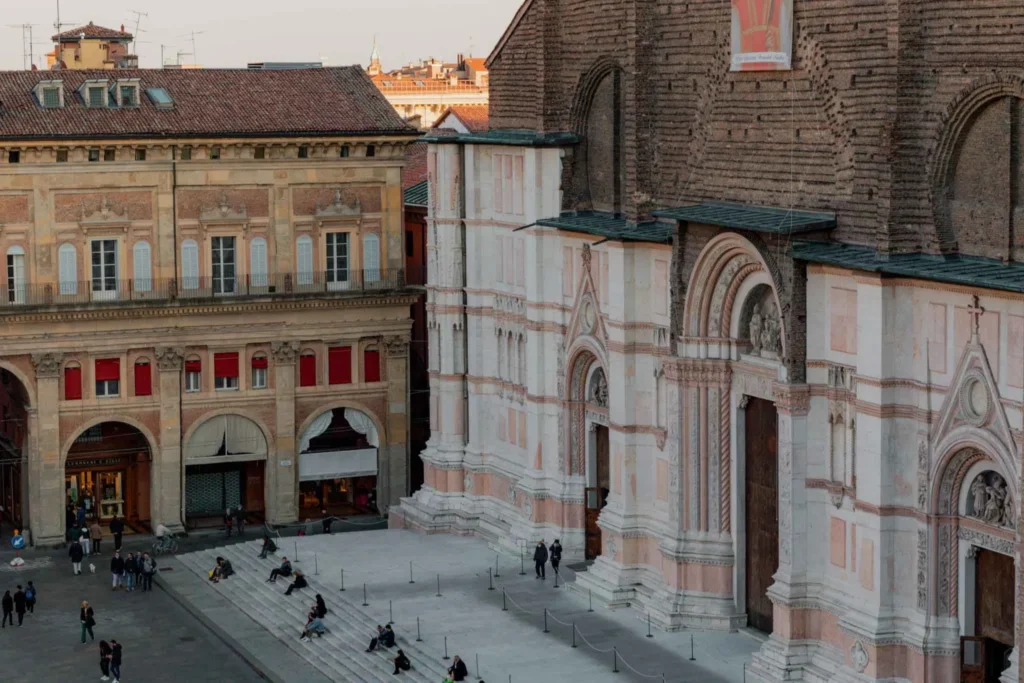
Bologna is in the Emilia Romagna region, just a 40-minute train ride north of Florence. It’s the capital of the region and is famous for its amazing food. I love food, and in Bologna, it’s hard to find bad meals. The locals say you can rarely eat poorly in Bologna. So, if you want to try the best traditional Italian food, Bologna is the place to be!
Besides the delicious food, Bologna has a lot of cool historical spots, local shops, and beautiful old buildings. It is home to the world’s oldest university and UNESCO World Heritage site with 62 kilometers of covered walkways called porticoes.
Ready to discover the 30 most awesome things to do in Bologna? Let’s get started! Once you’ve read about the best food, sights, and activities, don’t forget to check out my Bologna travel guide at the end. It has everything you need for your trip to this tasty Italian city.
What is Bologna known for?
Bologna is famous for its delicious food and has three special nicknames that tell us about its history and culture: The Learned, The Red, and The Fat.
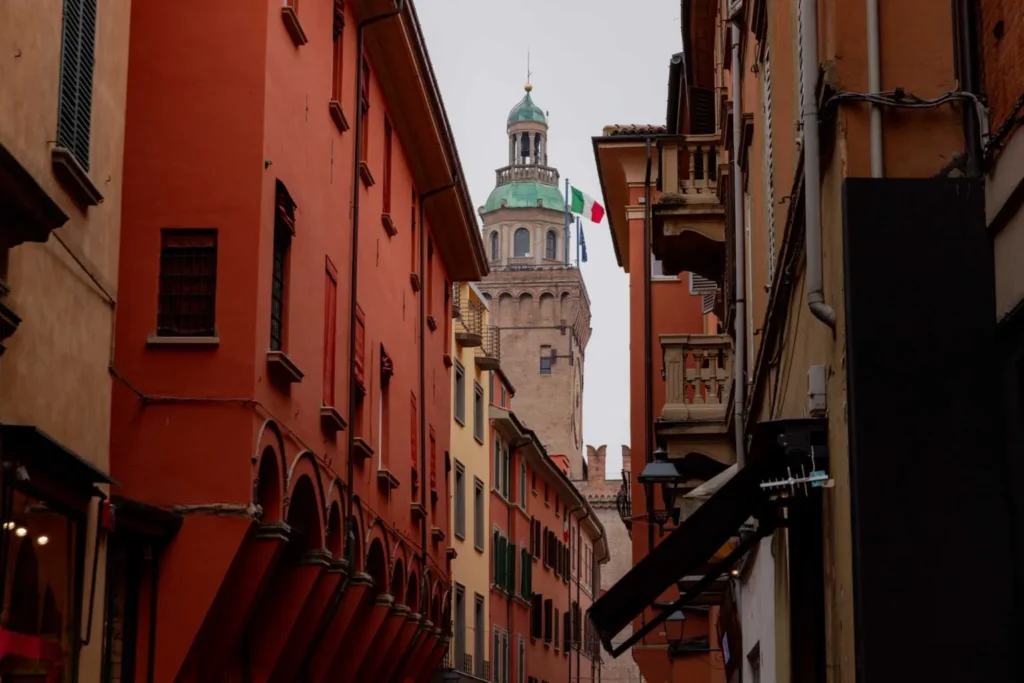
The Learned (La Dotta) is a nod to the University of Bologna, the oldest continuously operating university in the world since 1088. This university has a rich history of learning, and Bologna is well-known internationally as a city for scholars.
The Red (La Rossa) refers to the city’s distinctive terracotta red rooftops and buildings. These red colors are a unique feature of Bologna’s medieval architecture. When you stroll through the streets, be sure to look out for these historic buildings and their medieval rooftops.
The Fat (La Grassa) is a loving nickname that celebrates Bologna’s culinary traditions. It doesn’t mean excess but instead highlights the richness of flavor, quality, and tradition in Bolognese cuisine. Bologna is where many famous Italian foods like mortadella, tortellini, tagliatelle al ragu, and more were born. These tasty delights come from the Emilia Romagna region, making Bologna a paradise for food lovers and people who enjoy delicious meals.
30 Best Things to Do in Bologna Italy
1. University of Bologna
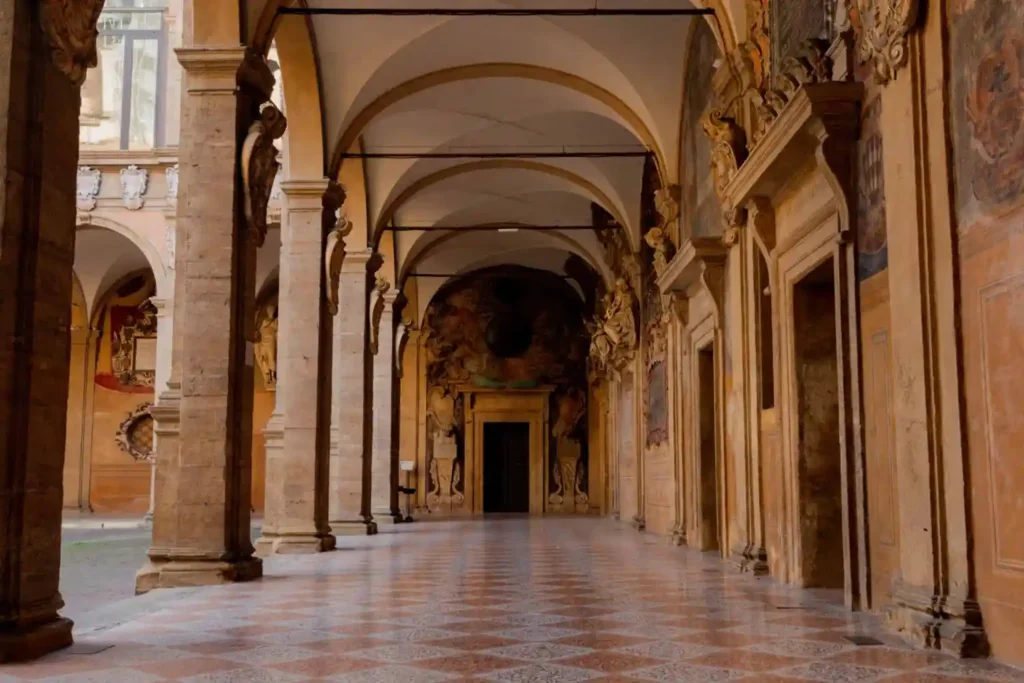
If you find yourself in Bologna Italy, make sure to check out the University of Bologna, which dates way back to 1088. It is renowned as the oldest university in the Western world and has been a big player in Italian history for ages.
The university is housed in the Archiginnasio Palace, right near Piazza Maggiore, the main square. This palace was built in 1563 to bring together different schools, like medicine and mathematics, all under one roof instead of being scattered across the city. Unfortunately, during World War II in 1944, the palace got bombed, but they managed to rebuild it after the war.
Now, one of the coolest parts of the palace is the Anatomical Theater from the 17th century, designed by Antonio Levanti. Back in the day, this room was where they held anatomy lectures, and you can still see a marble table in the center a replica of the dissection table they used during classes. It is a pretty fascinating spot to learn about the history of education in Bologna. And don’t miss the “Skinned Men” sculptures by Ercole Lelli from the early 1700s.

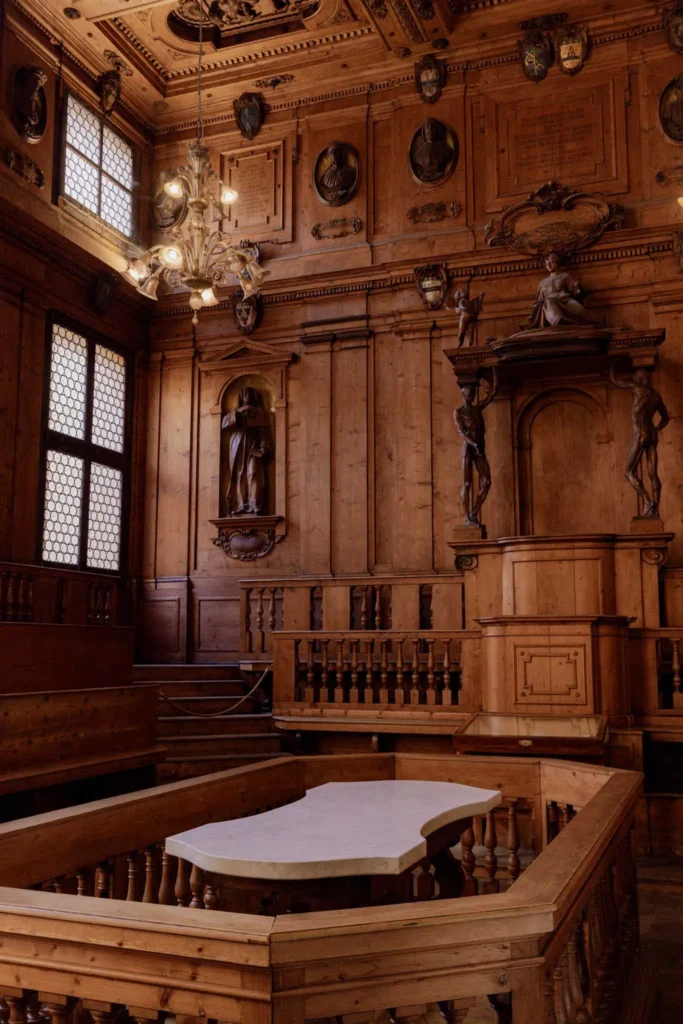
Once you’ve checked out the Anatomical Theater, take a stroll down to Stabat Mater Hall. This used to be a lecture spot for law students, and if you peek through the doorway on the left side, you will get a glimpse of the Municipal Library. It has thousands of old books on display, though it is not open to the public. Still, it is a cool view from there.
Take your time wandering around the palace, soaking in the beautiful decorations and paintings that cover the walls. A lot of these artworks are coats of arms representing students who went to the school from the 16th to the 18th centuries.
If you are planning to visit, grab your tickets online from the official website or at the ticket booth on the second level of the palace. It is smart to get them in advance, especially if you ae going during the busy season from June to September. Enjoy your visit!
Opening hours: Monday – Saturday from 10:00 am – 6:00 pm
Ticket prices: €3 per person
Address: Piazza Galvani, 1, 40124 Bologna BO, Italy
2. Wander Through the Porticos
Bologna, a city celebrated for its vibrant culture, rich history, and delectable cuisine, boasts a distinctive highlight: the UNESCO World Heritage porticoes.
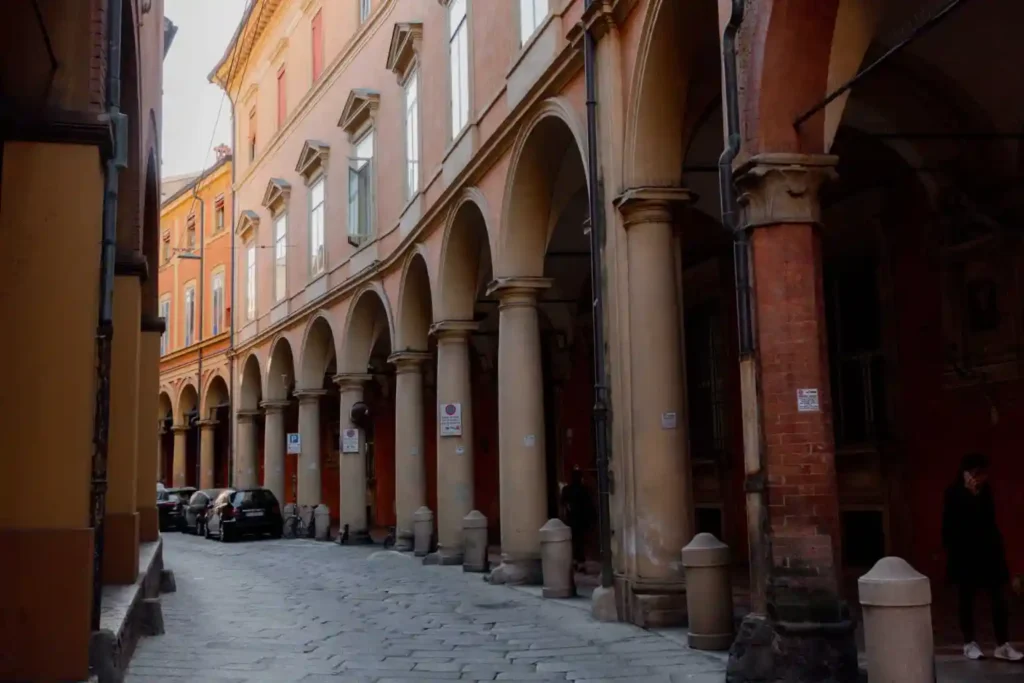
These historical covered walkways have a fascinating origin, with construction dating back to the 11th century. Today, they form an extensive network spanning over 62 kilometers throughout the city. Exploring the intricate designs of these porticoes and taking a stroll beneath them to appreciate the views is a must when visiting Bologna.
Among the most enchanting sets of porticoes is located around Piazza Cavour. These walkways feature ceilings decorated with exquisite fresh paintings, marvelously preserved over time. Be sure to take a moment to stop by and admire the beauty of these unique architectural features during your exploration of Bologna. It is an experience that perfectly captures the city’s charm and history.
3. Gelato (Ice Cream) Tasting
Bologna is a home of over 100 gelato shops, an impressive number for a city of its size. Finding fantastic gelato here is practically a guarantee. In fact, I discovered the best gelato of my live in Bologna.
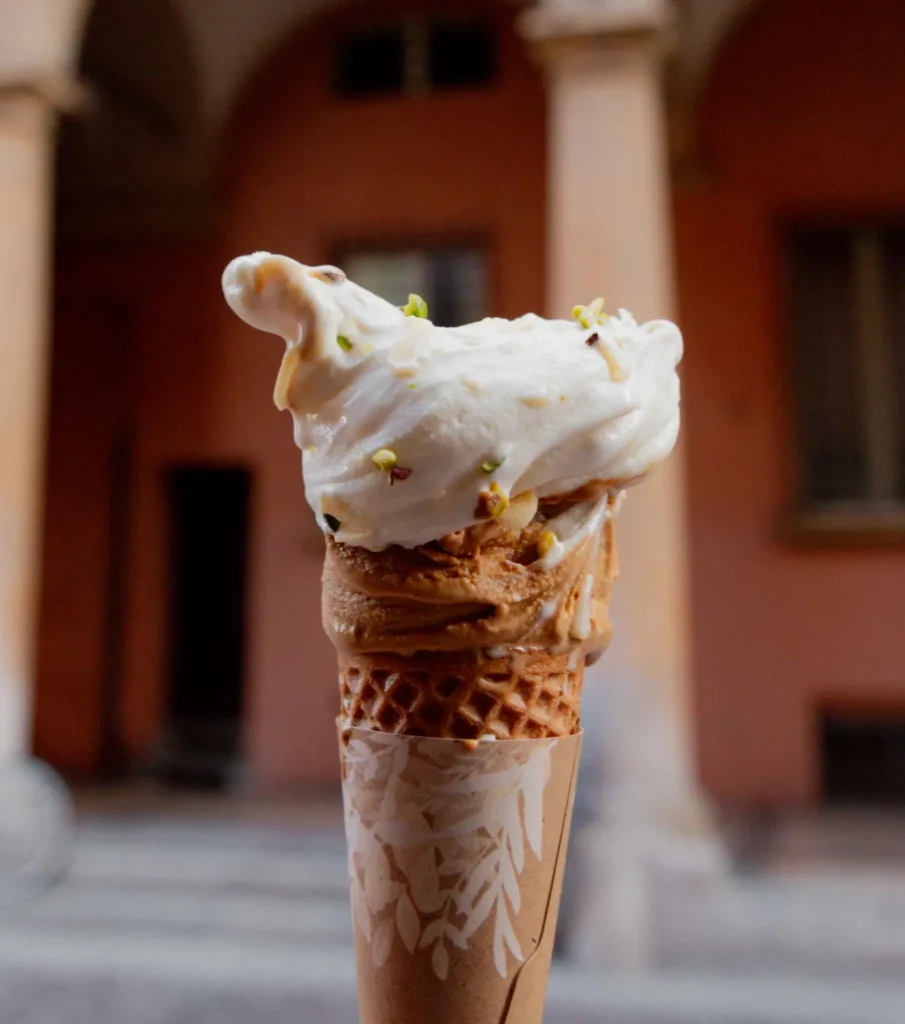
As a greedy food enthusiast, I scoured Italy in search of the finest gelato, and Bologna’s gelateries consistently take the top spot. If you are looking for a delightful experience, one of the absolute best things to do in Bologna is to treat yourself with a gelato tour. This allows you to savor some of the city’s most exceptional gelato offerings. Don’t miss the chance to indulge in this delightful aspect of Bologna’s culinary scene.
4. Taste the local specialties
If you are in Bologna and your main reason is the food, get ready for a culinary adventure that will surpass your expectations! The Emilia-Romagna region is renowned for producing some of the finest Italian delicacies, and Bologna is the perfect place to indulge in these culinary delights, even if you only have a couple of days.
Why Bologna's Food Scene is a Must
The Emilia-Romagna region is famous for its exquisite culinary offerings, ranging from Parma ham and Parmesan cheese to balsamic vinegar and mortadella. Consider taking day trips to Modena and Parma to witness the fascinating processes behind these exceptional products.
What to Eat in Bologna
1. Tagliatelle al Ragu

When you are in Bologna, don’t miss trying the city’s most beloved dish tagliatelle al Ragu. This hearty meat sauce, served with homemade egg-based pasta, is a flavorful delight that perfectly balances richness, acidity, and heartiness. While it’s technically the same as “pasta bolognese,” it is best to avoid using that term in Bologna.
2. Tortellini
These small, hat-shaped pasta delights are commonly filled with a pork mixture and are best enjoyed in a meaty broth with a sprinkle of fresh Parmesan. If you’re around in early October, check out the Tortellini Festival at Palazzo Re Enzo for a fun opportunity to sample various versions.
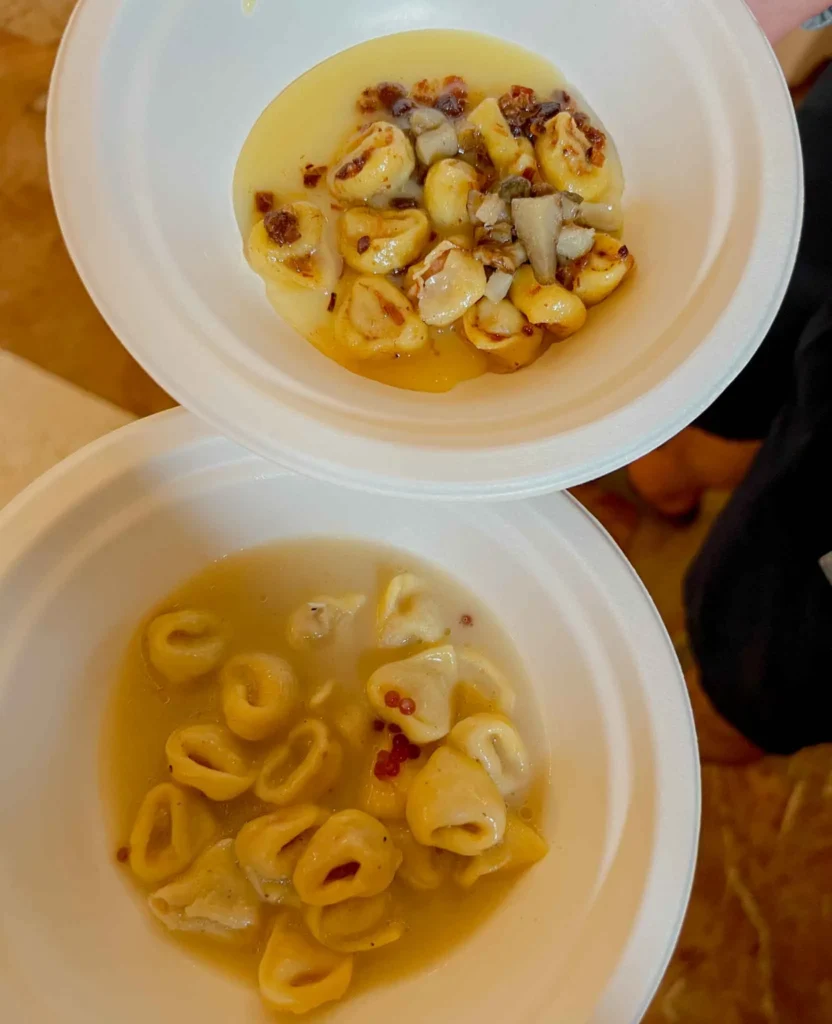
3. Tortelloni
Similar to tortellini but larger, tortelloni is often filled with a mixture of ricotta and spinach. During the fall, you might find versions stuffed with pumpkin, a personal favorite for many.
4. Lasagne Verde
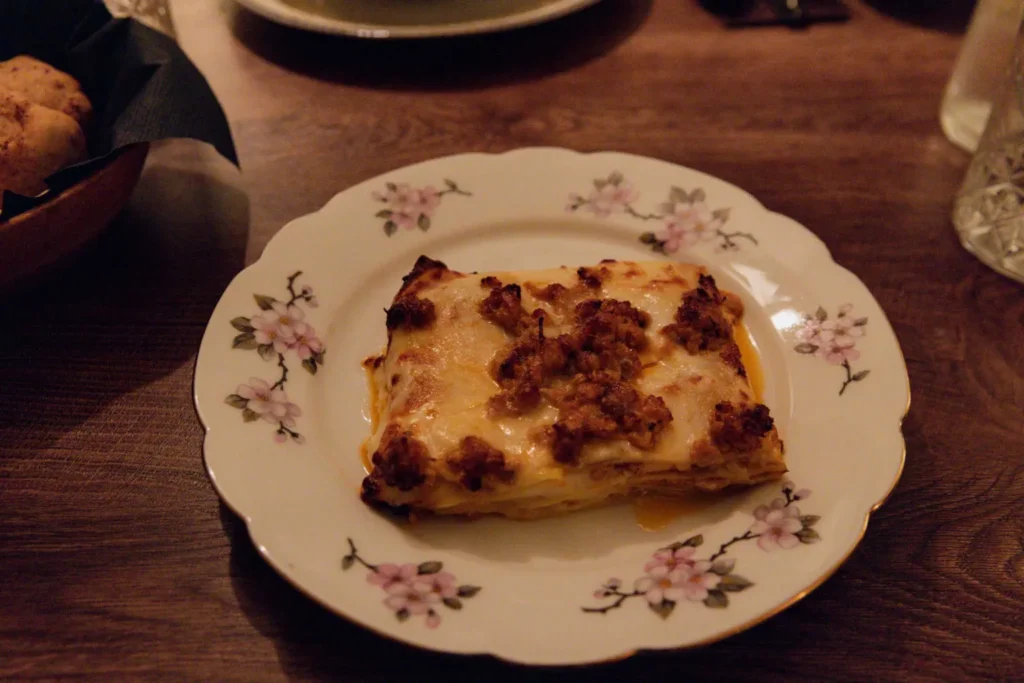
A must try is the Lasagne Verde, where green colored noodles, mixed with spinach, are layered with Ragu and Bechamel sauce, creating a rich and creamy blend of flavors. Golosita della Nonna is known for serving one of the best versions in the city.
5. Cured Meats
Emilia Romagna is famous for its cured meats, including Prosciutto, Culatello, Coppa, and Mortadella. Bologna, in particular, is known for Mortadella, featured in various dishes. For an excellent Mortadella experience, try Mo Mortadella Lab.
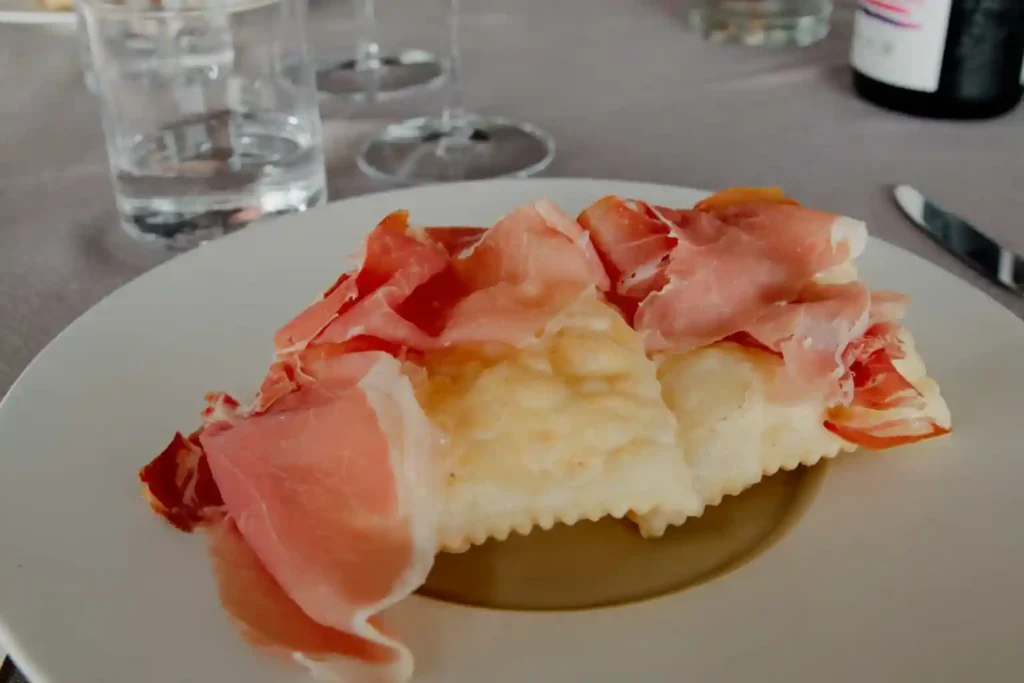
6. Crescentina
No visit to Bologna is complete without savoring Crescentina, a savory fried dough served with cured meats. For one of the best Crescentinas, head to Trattoria Da Me.
Bologna’s food scene is a journey into the heart of Italian culinary excellence, and a visit to this city is incomplete without savoring these delectable delights. Enjoy your culinary adventure!
5. Check out the markets
Bologna boasts several outdoor and covered markets, and we’re highlighting two covered markets that offer distinct experiences.
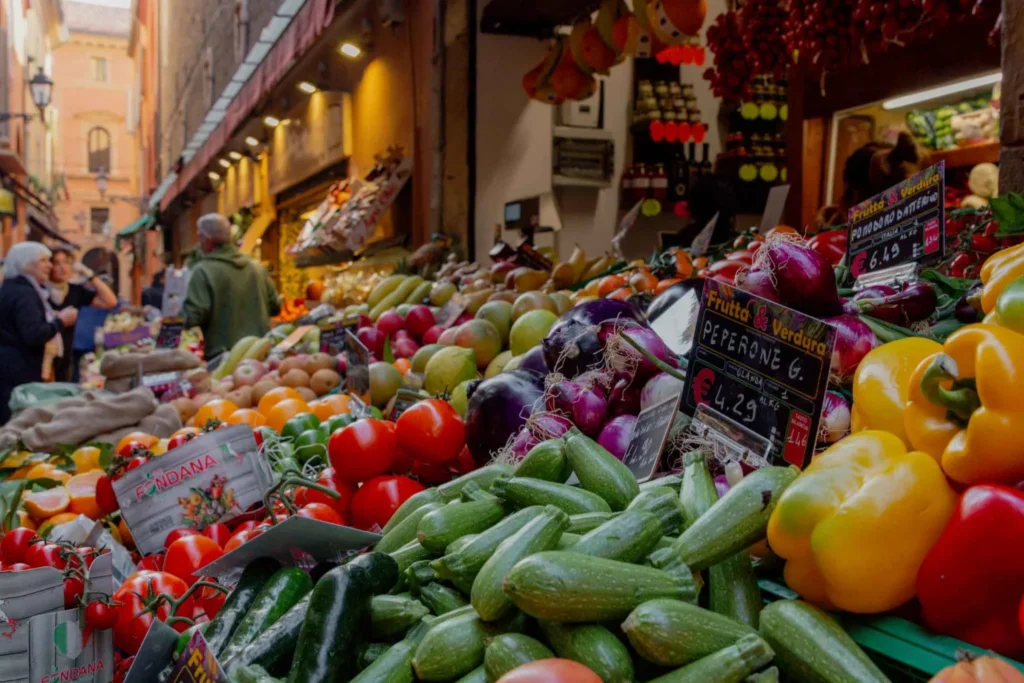
Mercato delle Erbe
For food enthusiasts, Mercato delle Erbe is a true haven. Offering a diverse array of meats, cheeses, fresh pasta, and locally sourced produce, this market is your one stop shop to embrace the local culinary scene and create your Italian feast.
Adjacent to the market, you’ll discover two food halls on either end. These halls house numerous food stalls, perfect for a quick and delightful bite or drink. If the craving for pizza strikes, make sure to grab a slice (or two!) from Mozzabella it is my top choice for pizza by the slice in the city.
Mercato di Mezzo (The Middle Market)
Mercato di Mezzo, Bologna’s inaugural covered food market, is a culinary delight. Inside, various food shops tempt you with offerings ranging from pasta and meats to cheeses and more.
On the main level, you will encounter a stall dedicated to fresh pasta, a bar where you can sit down for a relaxing drink, and another spot specializing in fresh seafood. Communal tables provide a comfortable space to taste your chosen refreshments or meals.
Venture into the basement, and you will discover Baladin Bologna, a bar that serves hamburgers and other quick bites, making it an ideal spot to grab a drink and a casual meal.
Whether you’re on the hunt for fresh ingredients to cook up your Italian masterpiece or seeking a quick and delicious bite to eat, Mercato delle Erbe and Mercato di Mezzo offer a rich tapestry of flavors and experiences in the heart of Bologna.
6. Climb the Asinelli Tower
As you wander through the heart of Bologna, you will undoubtedly spot two imposing towers that stand tall above the cityscape these iconic structures are collectively known as Le Due Torri, or the Two Towers.
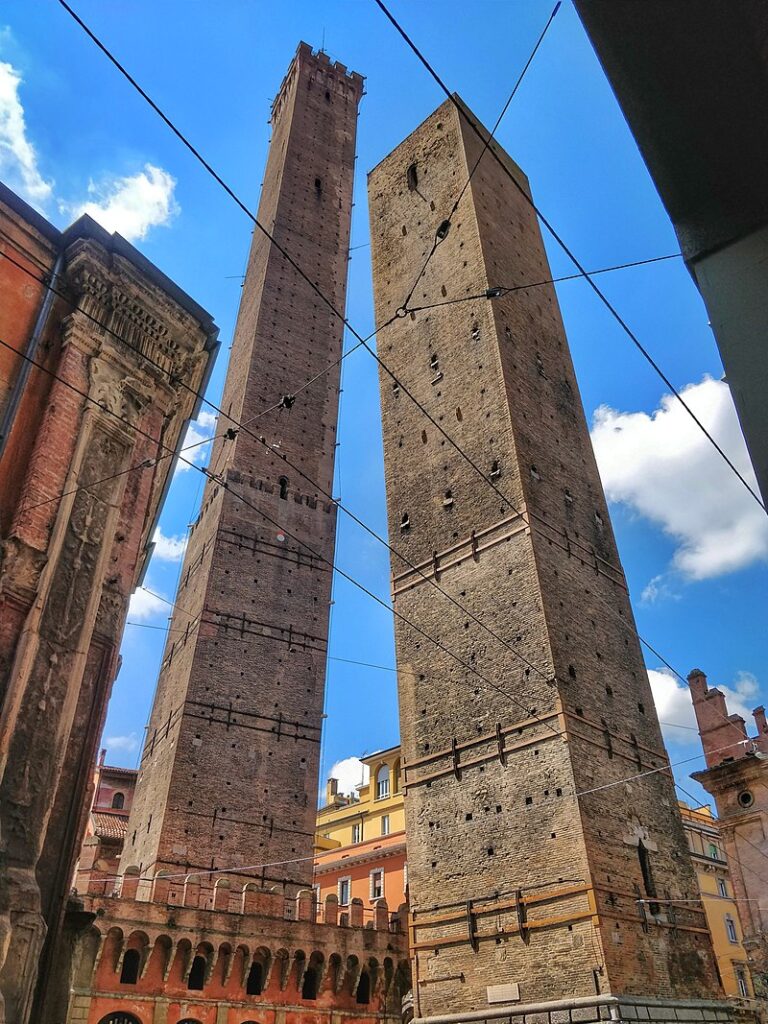
The shorter of the pair is the Garisenda Tower, constructed in the early 12th century. This tower has been leaning for an extensive period, with its tilt becoming more pronounced over time. In the 14th century, a decision was made to shorten the tower due to concerns about its stability, preventing a potential collapse.
On the other hand, the Asinelli Tower, also dating back to the 12th century, was one of the 180 towers built during the Middle Ages in Bologna. Soaring to a height of 97.2 meters, it offers breathtaking views of the city from its summit, reachable by conquering 498 steps.
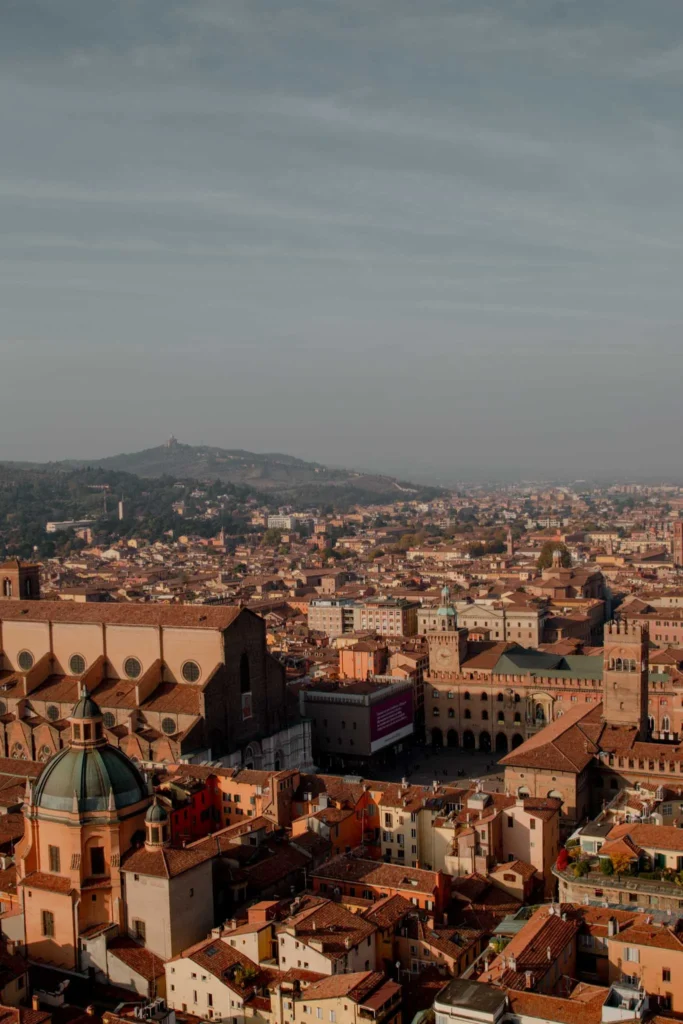

For the most spectacular panoramic views of Bologna, encourage yourself and ascend to the top of the Asinelli Tower. Trust me, the view is incredible and an experience not to be missed!
To capture the beauty, plan your visit in the evening when the lighting is optimal for stunning. This ensures that you not only witness the historic charm of these towers but also capture memorable moments with the enchanting cityscape as your backdrop. Book your tickets for the Due Torri online at the official website. I highly recommend reserving in advance, as time slots book up quickly.
Opening hours: 10:00 am – 5:15 pm (fall and winter hours vary)
Ticket price: €5 per person
Address: P.za di Porta Ravegnana, 40126 Bologna BO, Italy
7. Piazza Maggiore
Piazza Maggiore is not your run-of-the-mill square; it’s the beating heart and soul of Bologna. Erected in the 1200s, this historic square is surrounded by architectural gems that narrate tales of centuries past.
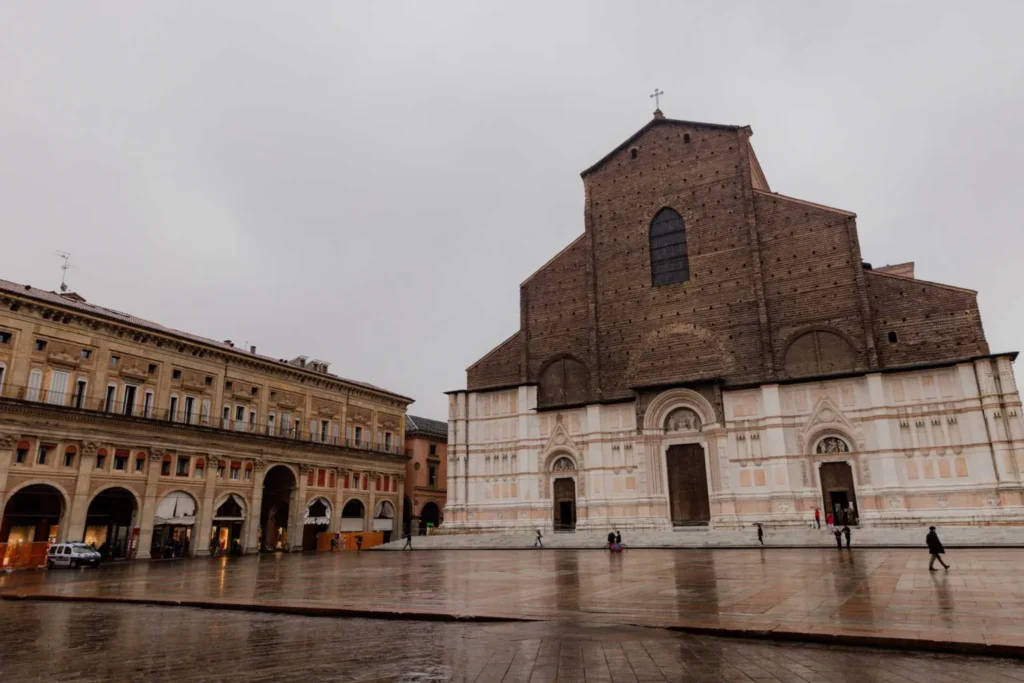
The centerpiece of the square is the iconic Basilica of San Petronio, Bologna’s largest church, and the Palazzo del Podestà. Other notable attractions in the square include the Torre dell’Orlogio (the clock tower) and the medieval Fountain of Neptune.
Encircling the piazza are numerous cafes, restaurants, and shops offering local delicacies and souvenirs. If you want to observe people, grab a seat on the steps near the basilica and immerse yourself in the vibrant scene for an hour or so.
8. Check out the Fountain of Neptune
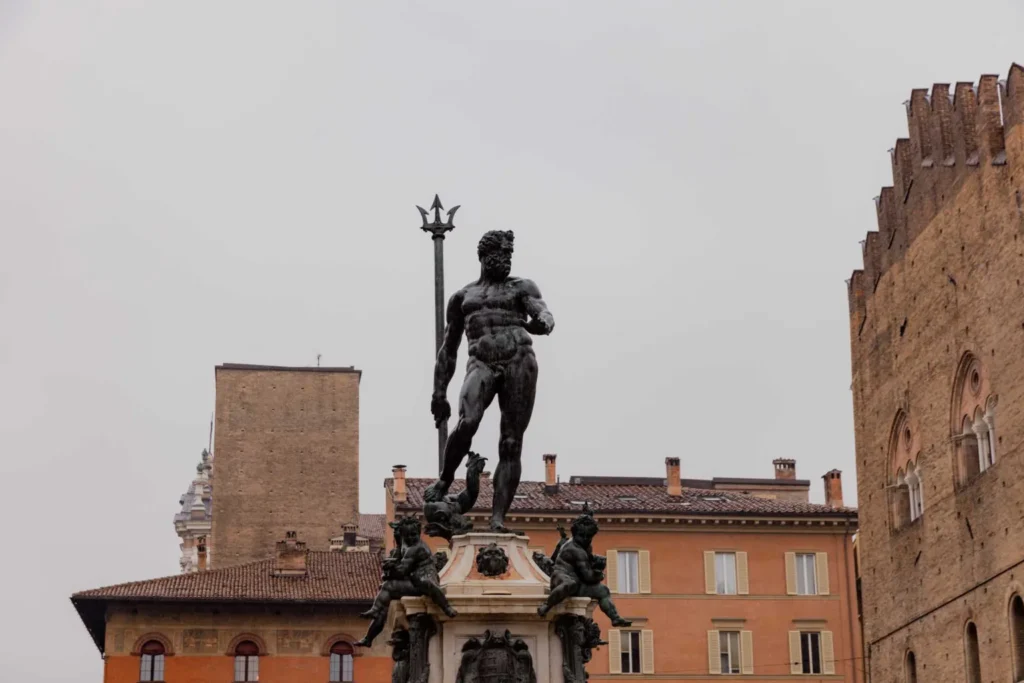
The Fountain of Neptune, a monumental structure in Piazza Maggiore, is a masterpiece commissioned by Pope Pius IV in the 16th century. This landmark, designed by architect Tommaso Laureti and sculpted by Giambologna, showcases a commanding bronze figure of Neptune, the Roman god of the sea, dominating the Piazza del Nettuno.
Erected during Bologna’s Papal rule, the fountain symbolizes the authority of the Pope and the Catholic church. The trident held by Neptune in the fountain inspired the iconic Maserati car logo.
9. San Petronio Basilica
Close to Piazza Maggiore, the San Petronio Basilica commenced construction in 1390, yet remains unfinished to this day. The church’s interior, though relatively simple, houses a few chapels adorned with beautiful frescoes, accessible for a small fee.

A distinctive feature of this basilica is the 17th-century Meridian line designed by Cassini, traversing the church. At noon each day, the sun aligns directly on this line, indicating the altitude and precise position of the sun throughout the year. San Petronio Basilica is not only a testament to Bologna’s rich history but also a marvel of scientific ingenuity. If you would like to learn more about the Meridian line, as well as the history of the church, then you can sign up for a private walking tour of the San Petronio Basilica and old university.
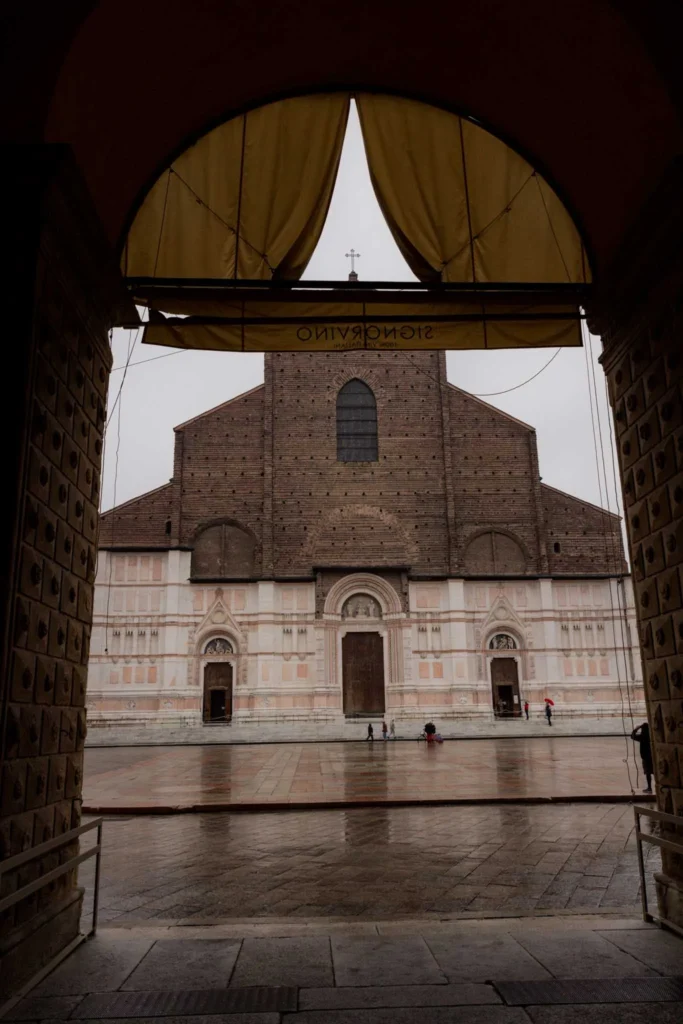
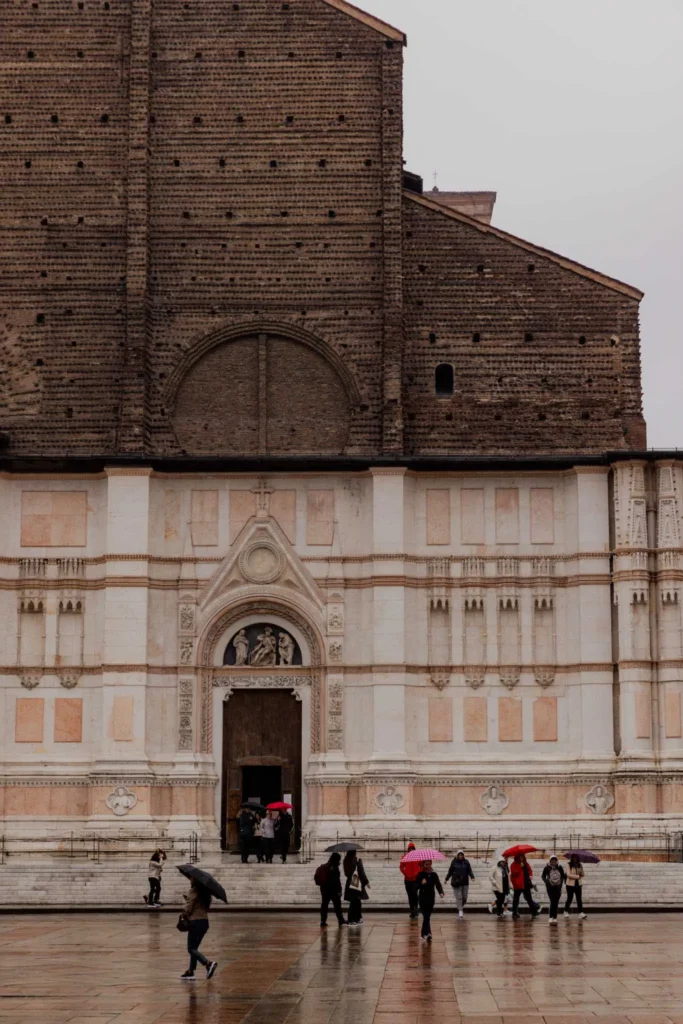
Opening hours: Everyday from 8:30 am – 1:00 pm / 2:30 pm – 6:00 pm
Ticket price: Access to the main church is free. €5 fee to visit the museum, which includes Magi’s Chapel (Bolognini), Saint Sebastian’s Chapel, Saint Vincent Chapel
Address:Piazza Maggiore, 40124 Bologna BO, Italy
10. Seven Churches of Santo Stefano
The Seven Churches of Santo Stefano may appear like any other church from the outside, but stepping inside reveals its unique charm. This historical religious complex, dating back to the 5th century, comprises several churches constructed in different time periods.
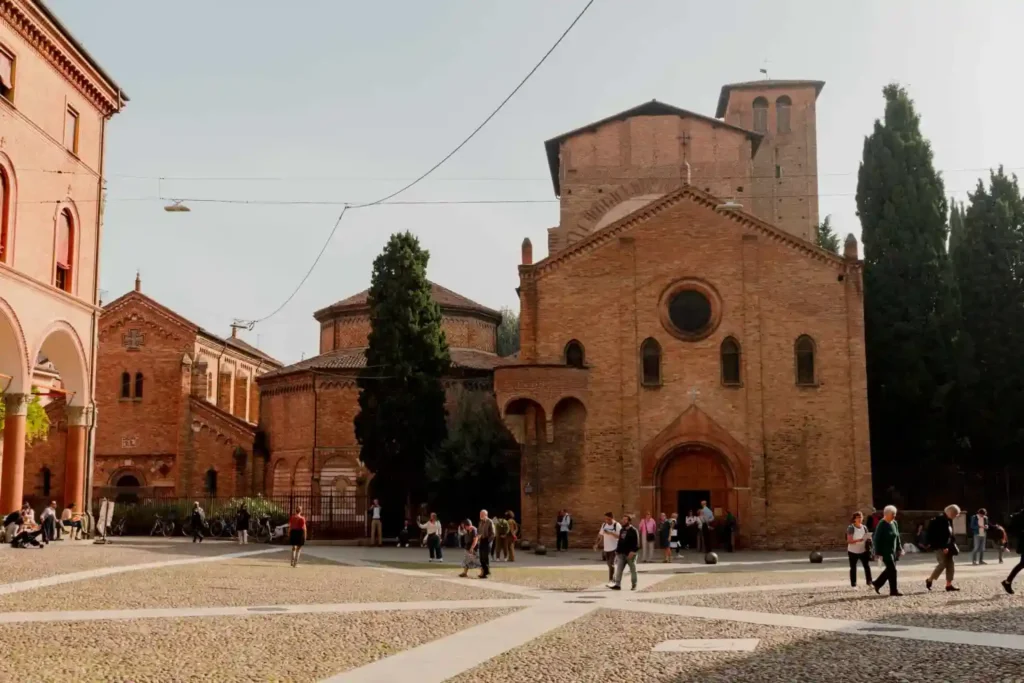
The Church of The Holy Sepulcher, the oldest of the seven, dating back to the 5th century, features a replica of the Holy Sepulcher in Jerusalem. As you explore the other churches within the complex, you’ll encounter remnants of exquisite frescoes, graves, and historical artifacts, offering a glimpse into the rich history of this complex.
The Santo Stefano complex is free to visit and welcomes visitors every day. Plan to spend at least 20 minutes here. For detailed opening hours and additional information, visit the official site.
Opening hours: Tuesday – Sunday from 9:30 am – 12:30 pm and 2:30 pm – 7:00 pm | Monday 6:00 pm – 7:30 pm (only the basilica is open this day)
Ticket price: Free
Address: Complesso di Santo Stefano Via Santo Stefano, 24 – 40125
11. Walk to the Sanctuary of the Madonna di San Luca
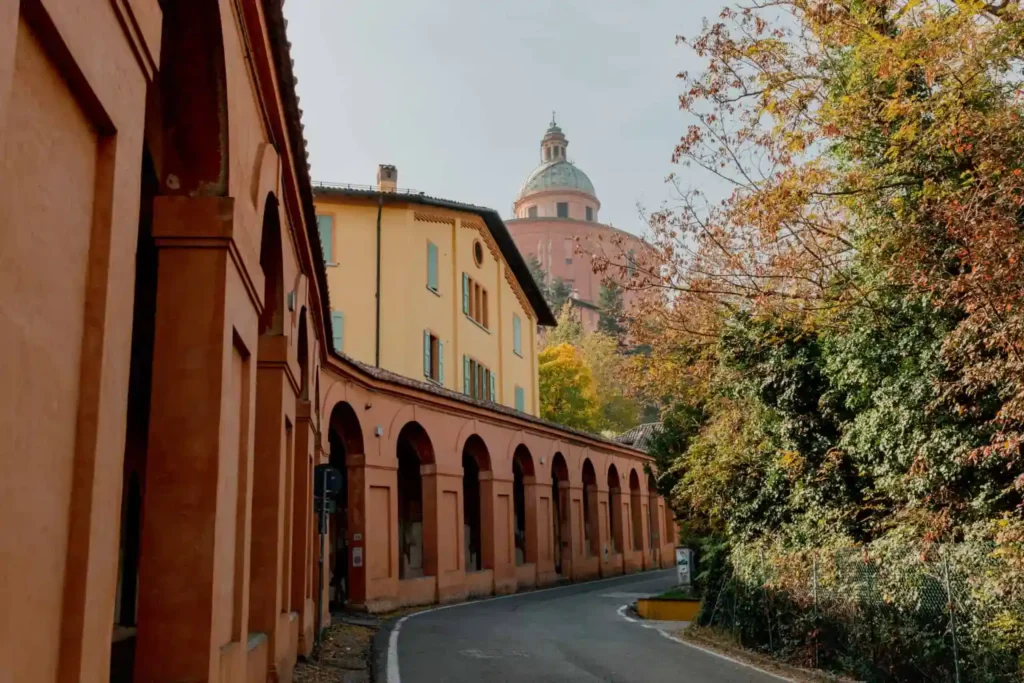
The Portico di San Luca, built between the 17th and 18th centuries, stands as the world’s longest portico, spanning 3.8km. It leads to the Sanctuary of the Madonna di San Luca, perched on the Colle della Guardia hill.
Embark on the walk from Porta Saragozza just outside the historic center, taking around 1 hour and 30 minutes to complete. For an optimal experience, tackle this in the morning to beat the crowds and the afternoon heat, especially during summer. The uphill journey involves several steps of stairs, providing not only a good workout but also a fresh perspective on the city.
San Luca Express Train

For those who prefer not to walk, the San Luca Express, a tourist train is available. It departs from Piazza Maggiore and takes around 20-30 minutes to reach the Basilica of San Luca.
How to book the train & cost: Book your San Luca Express train tickets in advance or in person. Round-trip tickets cost €12 for adults and €3 – €6 for children (depending on their age).
Once at the top, explore the Sanctuary of the Madonna di San Luca, and for panoramic views, consider the €5 San Luca Sky Experience, allowing you to climb to the top of the dome.
For more information, check our detailed guide on walking the Portico di San Luca.
Opening hours: Everyday from 7:00 am – 7:00 pm
Ticket Price: The basilica is free to visit | €5 fee to climb to the top of the dome
Address: Via di San Luca, 36, 40135 Bologna BO, Italy
12. Visit the Quadrilatero

The Quadrilatero, Bologna’s oldest market, is just off Piazza Maggiore with stalls offering fresh fish, and local crafts. Lined with restaurants, it’s an excellent spot for an aperitivo or a meal.
For a fantastic taste of local meats and cheeses, stop by Salumeria Simoni and try one of their charcuterie boards featuring mortadella, prosciutto, and Parmesan cheese. Arrive early for a less crowded experience in the afternoons and evenings.
13. San Pellegrino Park
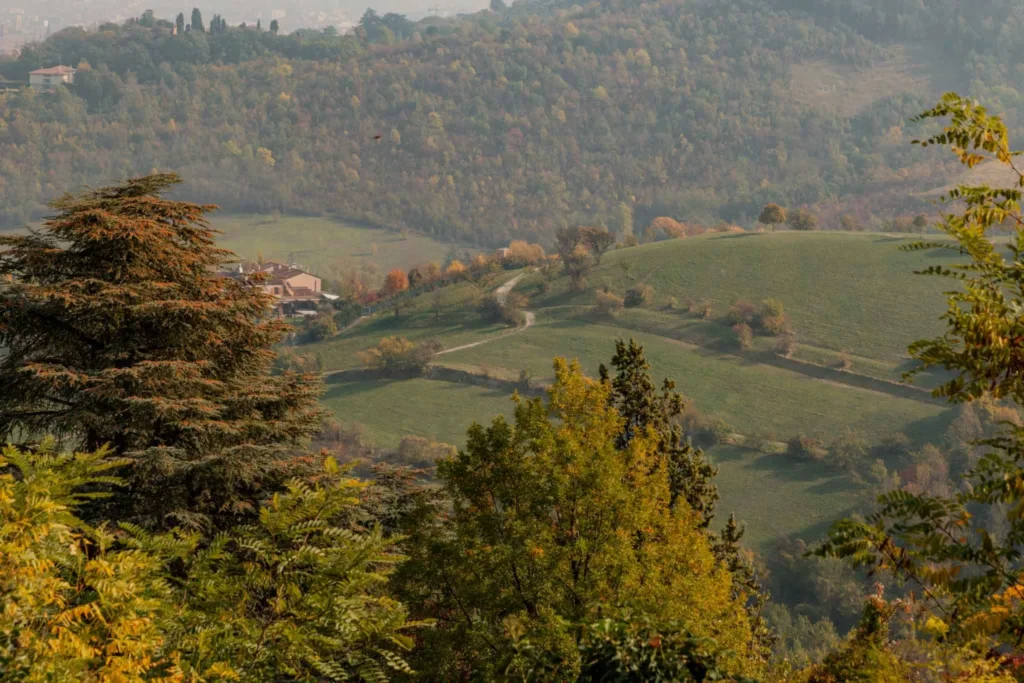
If you seek an escape from the city, San Pellegrino Park, located at the city’s edge just below the Sanctuary of the Madonna di San Luca, offers a tranquil retreat. Wander through the green hillside, enjoying views of Bologna from the park. Multiple walking trails cater to both hikers and those seeking a leisurely stroll in nature.
To reach the park, follow Via di Casaglia past Villa Spada until you arrive. It’s about a 3.5 km (2.2 miles) walk from Piazza Maggiore, so bring water and snacks.
14. Find the Hidden Canals
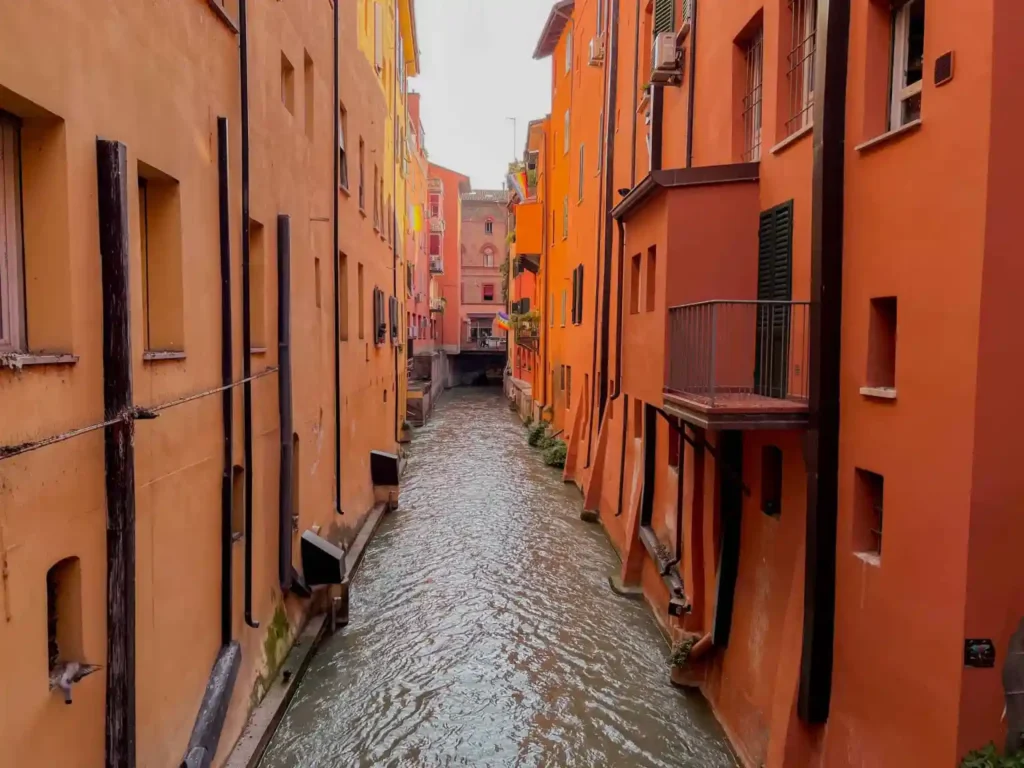
Bologna harbors a network of “hidden” canals from the 12th century, mostly running underground. However, a few exist just outside the city center, with the Finestrella di Via Piella offering an iconic view overlooking one of the main canals.
Social media has made this a popular attraction, so expect lines for the perfect shot. To avoid crowds, go early in the morning.
15. Church of Santa Maria della Vita

The Church of Santa Maria della Vita houses one of the Renaissance’s masterpieces, the “Lamentation over the Dead Christ.” Crafted by Niccolò dell’Arca in the late 15th century, this terracotta sculpture vividly captures the raw emotion of grief.
The sculpture depicts the Virgin Mary, Mary Magdalene, and others mourning over the lifeless body of Jesus, evoking a profound sense of sorrow. The expressions on the women’s faces, sculpted with precision by dell’Arca, transport visitors to that poignant moment.
Opening hours: Tuesday to Sunday from 10:00 am – 18:30 (last entry at 18:00)
Ticket prices: €5 to visit the Lamentation of Niccolò Dell’Arca | €9 to visit the Lamentation of Niccolò Dell’Arca and Oratorio dei Battuti
Address: Via Clavature, 8/10, 40124 Bologna BO, Italy
16. Go on a Bologna Food Tour

Exploring Bologna’s regional cuisine is best experienced through a food tour. The Classic Bologna Food Tour, a favorite, provides a unique cultural experience. Sampling local specialties and uncovering hidden shops, this half-day tour is a delightful way to discover the city through its food.
17. Visit the Clock Tower and Palazzo d’Accursio
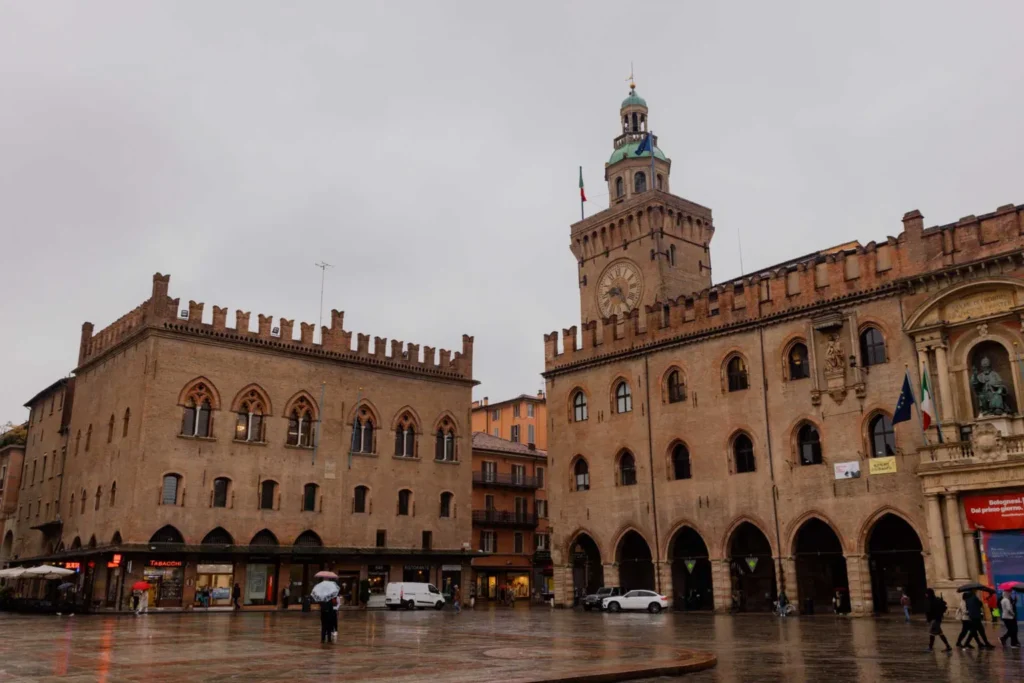
The Torre dell’Orologio (Clock Tower), an iconic sight in Piazza Maggiore, stands tall at over 60 meters. Built in 1334, it symbolizes the passage of time and offers stunning panoramic views across Bologna from its top.
Situated at Palazzo d’Accursio, home to the local government since the 14th century, the Clock Tower ticket includes access to the Municipal Art Collections inside. Elaborately decorated rooms with hand-painted ceilings and walls make this a must visit for interior enthusiasts.
Reserve tickets in advance online at the official site.
Opening hours: Tuesday – Sunday from 10:00 am – 5:00 pm
Ticket prices: €8 for both the clock tower and art collections
Address: Piazza Maggiore, 6, 40121 Bologna BO, Italy
18. Museo Civico Archeologico (Archaeological Museum)
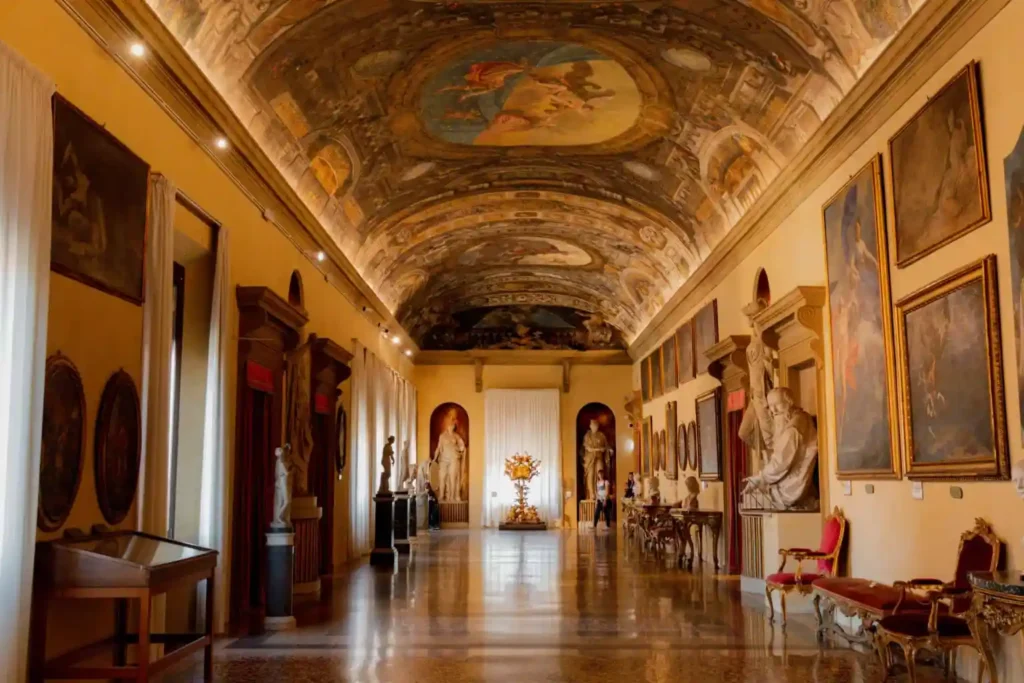
Founded in 1881, Bologna’s Archaeological Museum, housed in a 15th-century palace near Piazza Maggiore, boasts an impressive collection of ancient artifacts. From Egyptian objects to ancient Roman and Greek art, the museum provides a captivating journey through history.
Book tickets on the official site or in person at the museum.
Opening hours: Everyday (except Tuesday) from 10 am – 7 pm
Ticket prices: €6 per adult
Address: Via dell’Archiginnasio, 2, 40124 Bologna BO, Italy
19. Pinacoteca Nazionale di Bologna (National Art Gallery of Bologna)
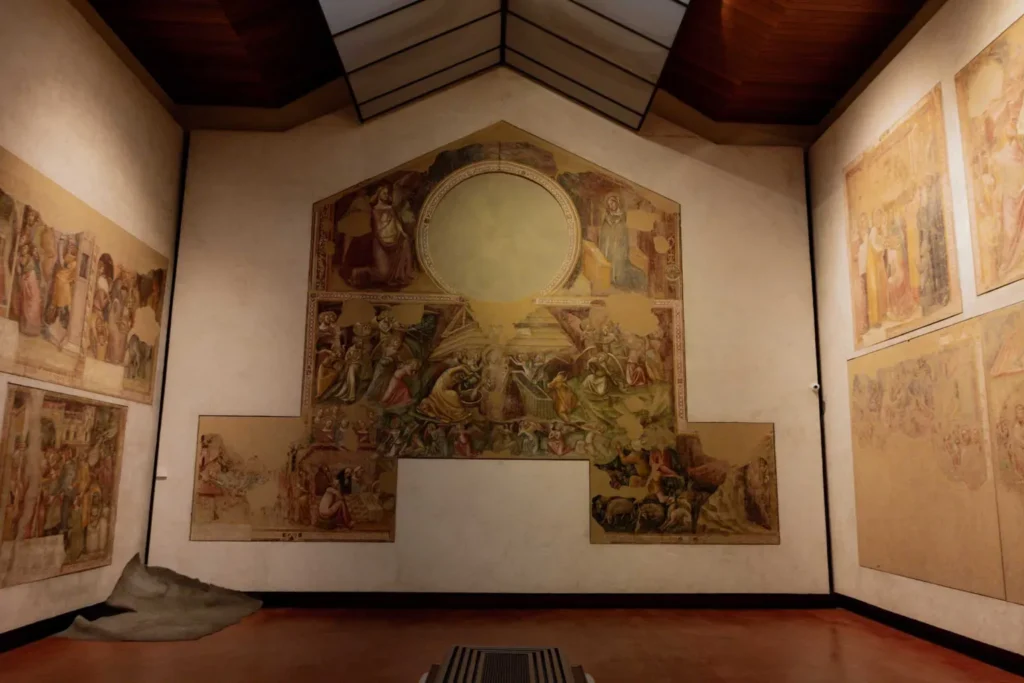
The Pinacoteca Nazionale, located in the University District, stands out as one of Bologna’s best art museums. Featuring Renaissance and Baroque artworks, along with various temporary exhibitions, it offers a visual feast for art enthusiasts.
Book tickets online on the official site or in person at the museum.
Opening hours: Tuesday – Sunday from 9 am – 7 pm (Wednesdays from 9 am – 2 pm)
Ticket prices: €8 for adults | €2 for kids | Free with Bologna Welcome Card
Address: Via delle Belle Arti, 56, 40126 Bologna BO, Italy
20. MAMbo (Modern Art Museum of Bologna)
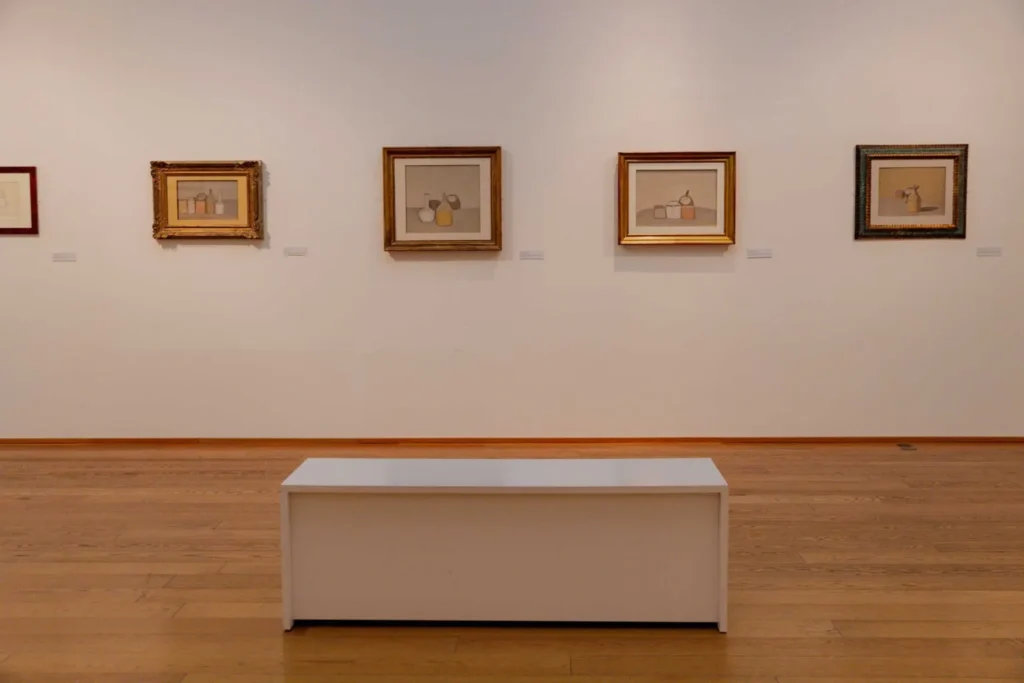
Bologna’s Modern Art Museum, situated in a former bakery and opened in 2007, focuses on modernist art from the mid 20th century to the present day. The museum showcases a remarkable collection of still life paintings by Bologna native Giorgio Morandi, along with annual exhibitions and permanent artworks.
Book tickets on the official site or purchase them in person at the museum.
Opening hours: Tuesday and Wednesday 2 pm – 7 pm | Thursday 2 pm – 8 pm | Friday, Saturday, Sunday, and festivities 10 am – 7 pm | Closed Mondays
Ticket prices: €6 per adult
Address: Via Don Giovanni Minzoni, 14, 40121 Bologna BO, Italy
21. Museo della Storia di Bologna (Bologna History Museum)

Housed in Palazzo Pepoli, the Museo della Storia di Bologna is dedicated to recounting the city’s history from the Etruscans onward. The museum employs modern technology, including projected videos and virtual reality, to offer a unique, immersive view into Bologna’s past.
Book tickets on the official website or in person.
Opening hours: Tuesday – Sunday from 10:00 am to 7:00 pm
Ticket prices: €12 per adult | Reduced tickets available
Address: Via Castiglione, 8, 40125 Bologna BO, Italy
22. Take a Foodie Day Trip
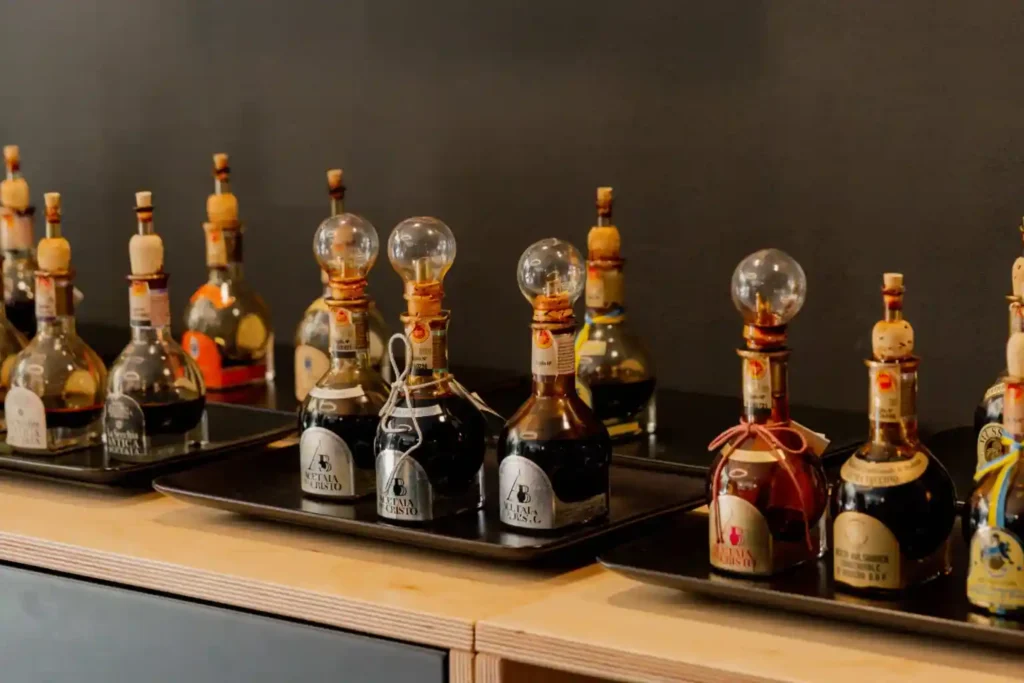
For a deeper immersion into Emilia Romagna’s food culture, consider day trips to Modena or Parma, both within an hour by train or car from Bologna. These cities provide fantastic food-focused experiences, allowing you to meet local producers and savor freshly made Italian products.
Foodie day trip to Modena:
Join a balsamic vinegar tour or a traditional food tour to sample regional specialties.
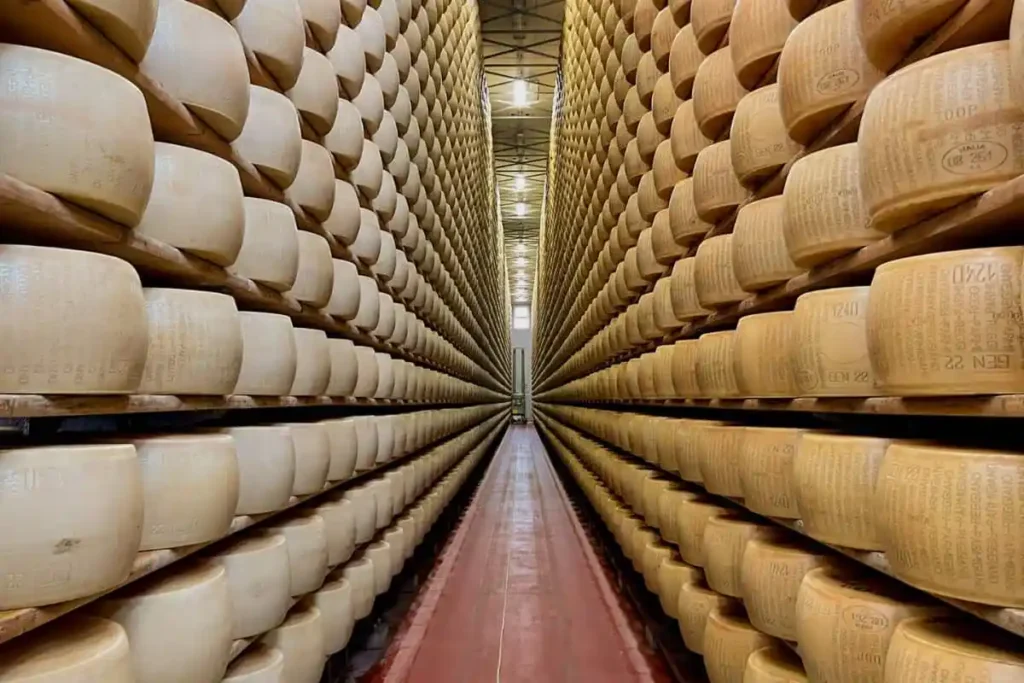
Foodie day trip to Parma:
Take a small group tour visiting a Parmigiano Reggiano cheese factory and a Parma ham producer.
For the ultimate experience, a full-day food tour encompassing wine tasting, Parmigiano Reggiano factory visit, Acetaia visit, and Parma ham producer visit is recommended.
23. Join a Cooking Class
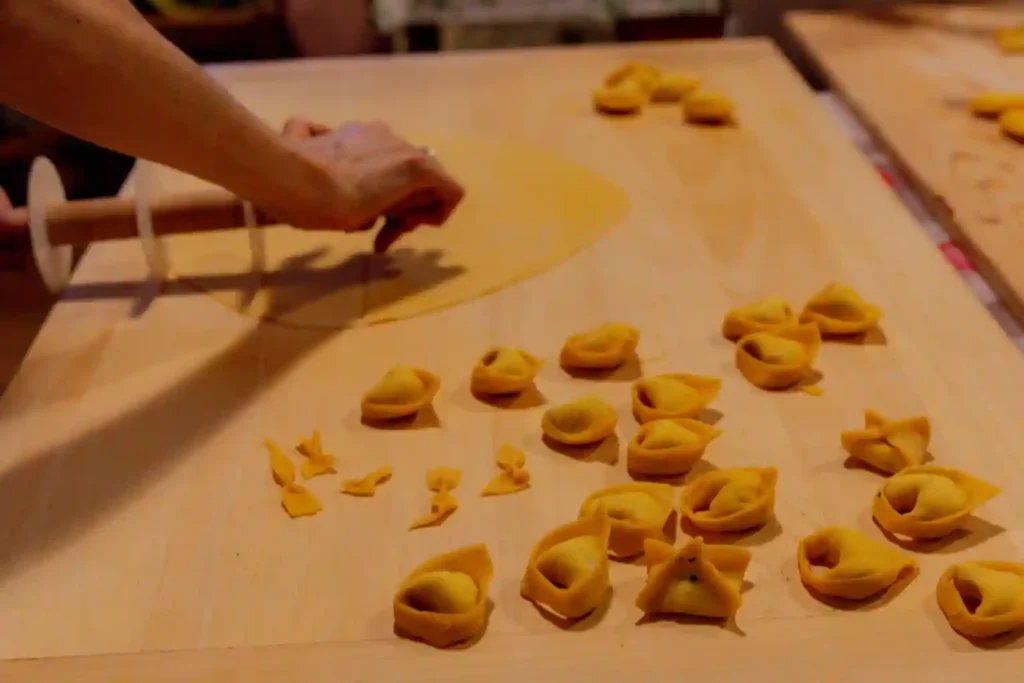
Immerse yourself in Bologna’s culinary culture by taking a cooking class. Learn about traditional Italian dishes, their history, and gain hands-on experience in the kitchen, perfecting pasta-making skills and mastering classic pasta sauces and stuffings.
Consider the highly rated pasta cooking class for an authentic culinary experience.
24. Visit a Nearby Winery
Emilia Romagna is renowned for its sparkling wines, including Lambrusco and Pignoletto. Take a day trip to a winery within an hour of Bologna for a delightful tasting experience. Some recommended wineries include Opera 02, Umberto Cesari, and Manaresi.
25. Learn How to Make Gelato the Old-Fashioned Way
Carpigiani Gelato University offers a unique experience for gelato lovers. Located just outside the city center, the university, founded in 2003, is a premier institution for learning the art of gelato making. Choose between week-long or month-long courses or opt for a one-day gelato-making class to gain insights into the history of gelato and learn ancient and modern techniques.
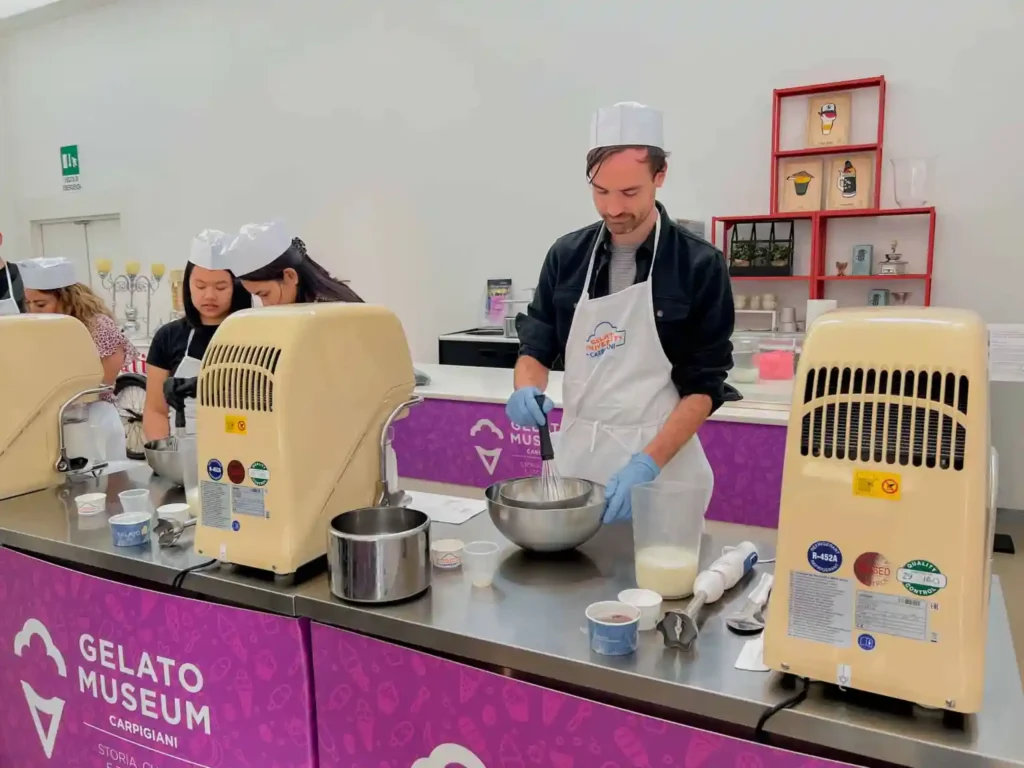
Book your masterclass experience at Carpigiani Gelato Museum for a fun and informative session.
How to get to Carpigiani from Bologna:
Take the #87 bus and get off at the “Anzola E. Magli” stop.
26. Have a Picnic in the Giardini Margherita

Giardini Margherita, located in the heart of Bologna, is a picturesque public park spanning 26 hectares. With its historic lake and lush greenery, it provides a peaceful retreat. Grab some picnic supplies in the city and spend a relaxing afternoon in the park.
Consider stopping by Le Serre dei Giardini for a drink or a bite in their greenhouse or gardens.
27. Visit the Certosa Cemetery
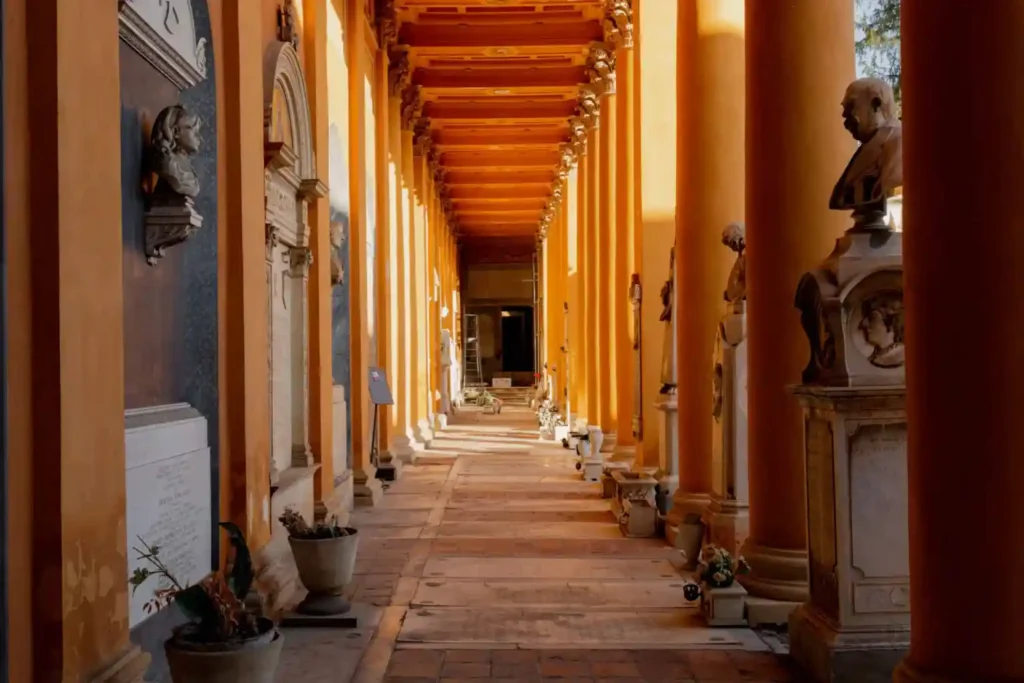
The Certosa Cemetery in Bologna offers a unique and fascinating experience. Located just outside the city center, it serves as an open-air museum with ancient tombs and monuments, dating back centuries. The cemetery is the resting place of notable figures from Italy’s past, including artists, musicians, writers, and politicians.
Wander through this historic cemetery, admiring its architecture and reflecting on its rich history.
28. Take a Day Trip to Nearby Cities
Due to its central location, Bologna serves as an excellent base for day trips to nearby cities. While Modena and Parma are recommended, consider exploring Ravenna for Byzantine mosaics, Ferrara for its medieval charm, Dozza for its art murals, and Rimini for a beach getaway.
29. Join the Passeggiata on Sunday
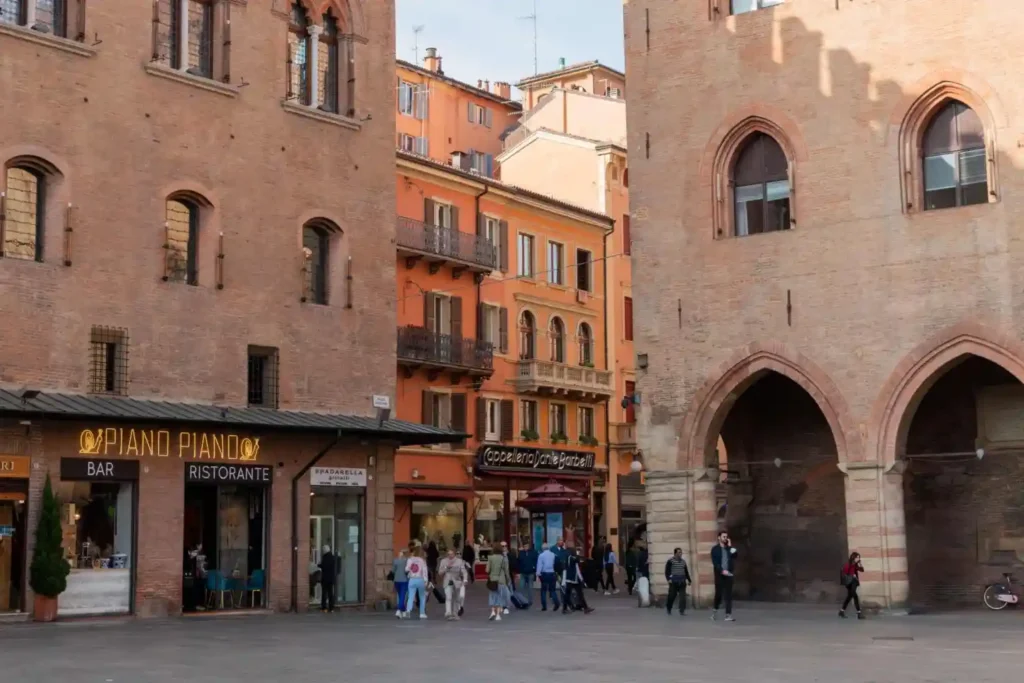
Experience La Passeggiata, a cherished Italian tradition, every Sunday from 4 pm to 7 pm. Join locals and visitors as they stroll through Bologna’s charming streets and plazas, engaging in conversations, and stopping by local cafes. This weekly gathering provides a vibrant cultural experience.
Participate in the lively atmosphere and embrace the Sunday tradition in Bologna.
30. Watch a Movie at Cineteca di Bologna
Cineteca di Bologna, a foundation dedicated to restoring old films, provides a unique cinematic experience. Watch classic and lesser-known films on the big screen, showcasing the art of film restoration.
Whether you’re a film buff or appreciate old films, this evening activity in Bologna is a distinctive and enjoyable way to spend your time.
Check out the programming schedule on the official website.
Tips for eating out in Italy
Tips Eating out in Italy might seem confusing, but here are some simple tips to make you feel more at ease with their customs:
1. Tipping: You don’t have to tip, but if you liked the food or your waiter, a 10%-15% tip is appreciated.
2. Cover Charge: Every restaurant has a cover charge per person (called “coperto”) to cover table expenses like bread and linens. It’s usually €2-€5, and you can find it on the menu.
3. Menu Order: Italian menus have appetizers, first courses (usually pasta), second courses (meat), and desserts. You don’t have to order all courses.
4. Reservation: It’s a good idea to reserve a table, especially at popular places. If you can’t speak Italian, use Google Translate or ask if they speak English when reserving.
5. Last-Minute Dining: If you can’t reserve, arrive when the restaurant opens. They often keep a few tables for walk-ins, especially for two people. It might not be ideal, but it usually works.
How Arrive Bologna
Arriving Bologna is easy as it is well connected by air and train. Here's how you can reach Bologna:

By Plane:
Bologna’s international airport is called Bologna Guglielmo Marconi Airport (BLQ). International flights are available from Europe as well as Outside Europe.
From Bologna Airport to City Center:
– Take the Marconi Express monorail to Bologna train station.
– The train runs every 7 minutes and costs €11 each way or €20 round trip.
– The monorail drops you off at Bologna train station, and from there, it’s a 15-20 minute walk to the city center.
– Taxis are also available and take around 15-20 minutes.
By Train:
Bologna’s central train station connects you to other major cities in Italy like Milan, Florence, Venice, and Rome. You can buy train tickets on the Trenitalia website or app, ideally at least 3 weeks in advance for better prices.
– Milan to Bologna: High-speed train takes 1h 5min to 1h 21min | Regional train takes 2h 50min.
– Florence to Bologna: High-speed train takes 38 minutes | Regional train takes 1h 27min.
– Rome to Bologna: High-speed train takes 2h 3min to 2h 23min | Regional train takes 5h 24min to 7h 56min.
– Venice to Bologna: High-speed train takes 1h 33min | Regional train takes 2h 6 min.
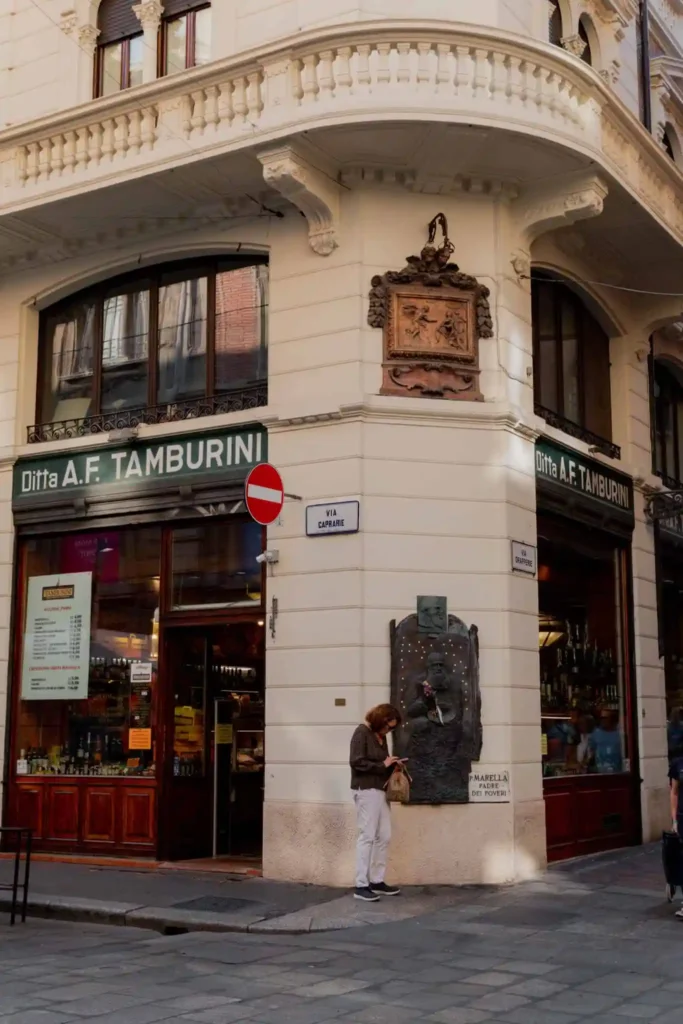
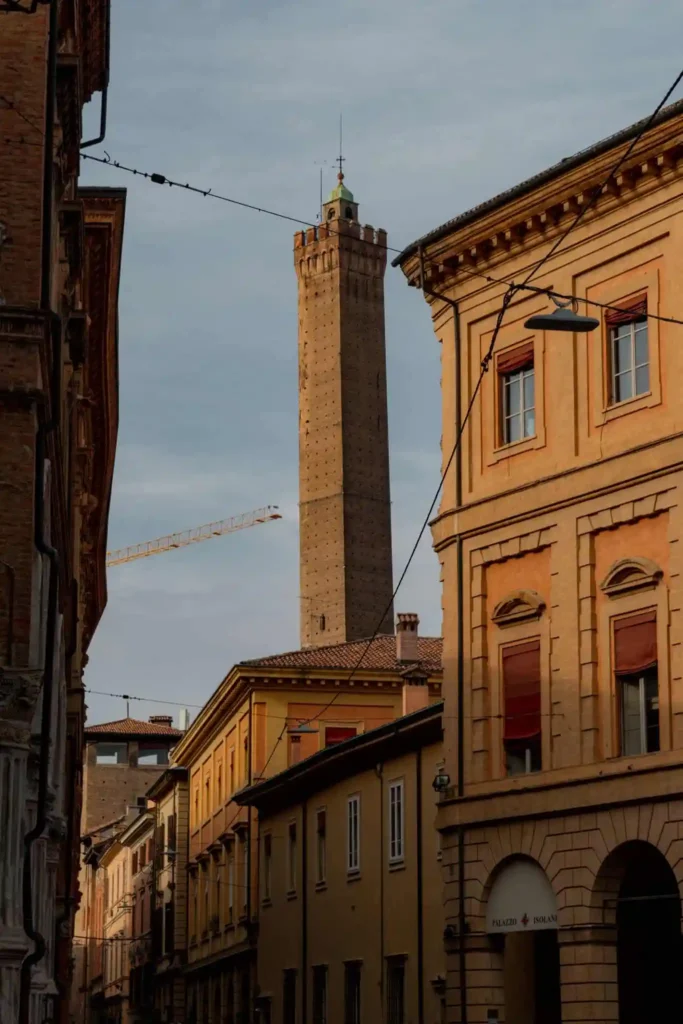
By Train:
Bologna’s central train station connects you to other major cities in Italy like Milan, Florence, Venice, and Rome. You can buy train tickets on the Trenitalia website or app, ideally at least 3 weeks in advance for better prices.
– Milan to Bologna: High-speed train takes 1h 5min to 1h 21min | Regional train takes 2h 50min.
– Florence to Bologna: High-speed train takes 38 minutes | Regional train takes 1h 27min.
– Rome to Bologna: High-speed train takes 2h 3min to 2h 23min | Regional train takes 5h 24min to 7h 56min.
– Venice to Bologna: High-speed train takes 1h 33min | Regional train takes 2h 6 min.
Renting a Car:
– Only rent a car if you plan day trips accessible by car; not needed within Bologna.
– Use Discover Cars for rentals.
– Parking in Bologna is limited and expensive; driving in restricted zones risks tickets.
Bologna Welcome Card
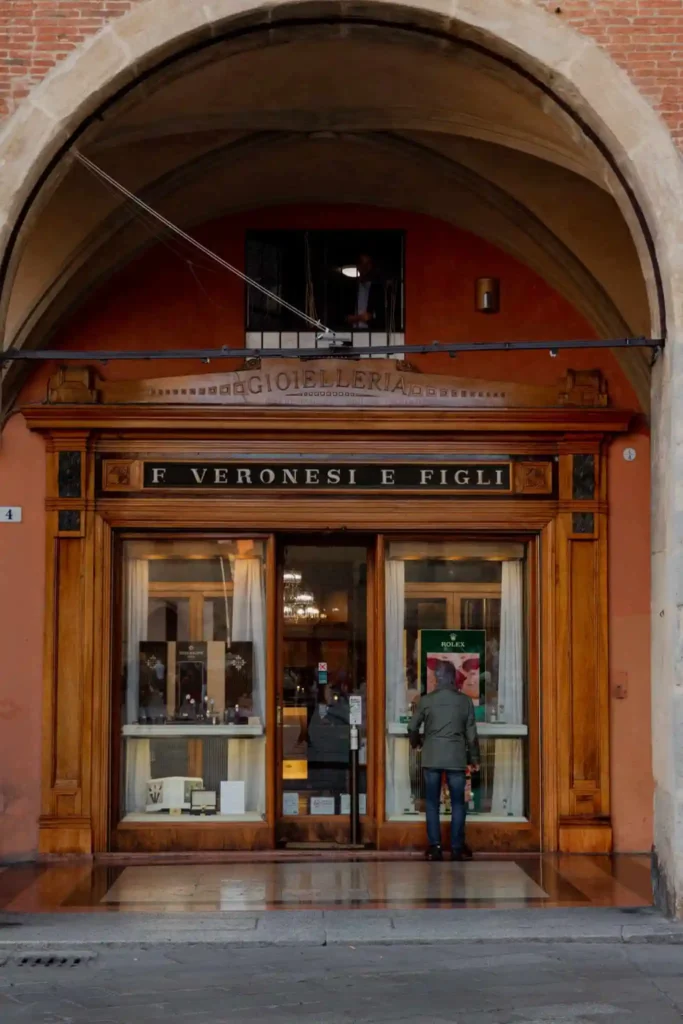

The Bologna Welcome Card stands as a convenient tourist pass, granting affordable entry to numerous popular attractions across the city.
Two distinct card options are available for purchase:
1. BW Card EASY – €25/person:
This card offers admission to over 10 of Bologna’s museums, along with access to the Asinelli Tower and a guided walking tour of the city.
2. BW Card PLUS – €40/person:
Inclusive of all features in the BW Easy Card, this option extends its offerings to include access to City Red Bus tours, and the San Luca Express train and provides a discount on Clock Tower tickets. The card remains valid for 15 days from activation, allowing ample time to explore without the pressure of a tight schedule.
Is the Bologna Welcome Card worth it? It depends entirely on your preferences for exploration. For those intending to explore a multitude of museums, the BW Card is a valuable investment. However, if your itinerary involves only a few key attractions such as the Asinelli Tower and the Basilica di San Luca, opting out of the BW Card may be more prudent.
Festivals in Bologna

Tortellino Festival
Immerse yourself in one of Bologna’s most exciting culinary events, the Tortellino Festival, held annually on October 4th at Palazzo Re Enzo in Piazza Maggiore. This pasta paradise sees 21 local chefs crafting their unique interpretations of the classic tortellini. With the opportunity to savor all creations, attendees can indulge in a delightful array of flavors. Having attended the 2022 edition, we relished six delectable bowls between the two of us and left thoroughly satisfied. The festival runs from 11:30 am to 9:45 pm, but brace yourself for long lines. Tickets are €5 for one tasting or €45 for the full gastronomic experience. Find detailed information on the official website.
Festival Dei Sapori
In April each year, the Palazzo Re Enzo transforms into a culinary haven for the Festival Dei Sapori (Festival of Flavors). This event celebrates the diverse cuisines of Italy through food tastings, cooking classes, panels, and more. Entrance to the festival is free, and further details can be found on the official website.
Bologna Travel Guide

Certainly! Here’s a response to the question:
Is Bologna worth visiting?
Yes, Bologna is worth visiting! With its fantastic food scene, historic architecture, authentic culture, and convenient location for day trips, you are sure to have an incredible time in Bologna. We fell in love with Bologna the first time we visited and have since been back three times.
When is the best time to visit Bologna?
Bologna’s temperature is milder than Northern Europe however, the city still experiences pretty hot summers and cold winters.
The best time to visit Bologna is from late spring to early fall. Specifically, I suggest visiting during May and October when the temperature is nice and the city is not too crowded.
It is also preferable to visit Bologna in October. The countryside is stunning during this time when the hills are dotted with red and yellow leaves.
There are also many fantastic food options during the fall season in Bologna.
How many days do you need in Bologna?
I recommend spending a minimum of 3 days in Bologna. You need at least two days to explore the city and then a third day to take a day trip in the region.
If you want to see more of the region, then I suggest making Bologna your home base. Its central location makes it easy to visit nearby cities within an hour or two like Florence or Ravenna.
How do you get around Bologna?
The best way to get around Bologna is to walk! Most of the main sights are in the historic city center and can be reached within a 15 to 20 minute walk no matter where you are in the city.
If you’re planning to visit somewhere outside of the center, then the bus is your best option. You can purchase single-use bus tickets at any tobacco shop in the city. The cost is €1.80 per ride.
I use the Google Maps bus option to help us get around Bologna by bus.
Do you need cash in Bologna?
In my experience, almost all restaurants and shops take cards in Bologna. However, I always recommend having some cash on hand, since some places might have minimum card spend requirements (gelato shops) and you may need cash in this instance.
There are plenty of ATMs around the city, so you can easily take out cash if needed.
Do people speak English in Bologna?
Most of the people working at restaurants, shops, or the touristy sights know some English in Bologna. You shouldn’t have any issues getting around if you don’t speak any Italian.
As a common courtesy, I recommend learning a few essential words before traveling to Italy like hello (Salve), thank you (grazie), and goodbye (ciao or arrivederci).


1 thought on “30 Best Things To Do in Bologna: Travel Guide 2024”